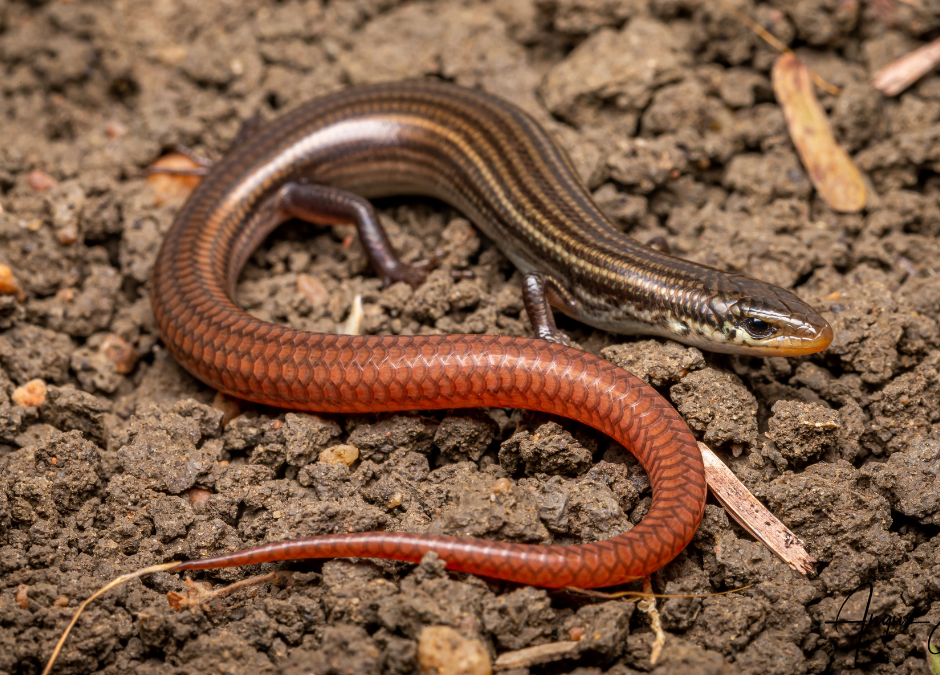A team of researchers have recently re-discovered the Lyon’s grassland striped skink on a station near Mount Surprise, 42 years after it was last seen.
A recent expedition, led by Dr Andrew Amey from the Queensland Museum, was successful in locating three rare skink species in the Gulf Savannah, including the Limbless Fine-Lined Slider (Lerista storri) and the Mount Surprise Slider (Lerista ameles), but the re-discovery of Lyon’s grassland striped skinks (Austroablepharus barrylyoni) after 42 years was undoubtedly the most significant result of the work.
The Lyon’s grassland striped skink is a critically endangered species only known from a single location near Mount Surprise. Despite surveys specifically targeting them, the species has not been seen since they were first recorded during surveys undertaken between 1976-81 and it was feared to be extinct.
Dr Amey, Collection Manager of Herpetology at the Queensland Museum, said that the skinks had likely remained elusive because of the remote and difficult terrain and their secretive nature.
“This lizard requires a special effort to find it, it’s not simply a matter of walking through suitable habitat and spotting it running about. It lives in the deep cracks formed by black soil underneath thick grass cover. Even if it were active on the surface, you’d never spot it. Instead, you have to dig pit traps, which is not an easy matter in this soil which sets like concrete as it dries, and be patient.”
“As far as we know, it only lives in this one spot, which is a fairly remote location, so just getting there requires considerable planning. If it rains, the soil it lives in becomes impassable sticky mud, and you just have to wait for it to dry out. Sometimes, this can take months.”
But now the species is confirmed to persist in the wild, it raises questions about how widespread its distribution is, whether the population is stable or declining, and what the future might hold.
Read the full article in the Gulf Croaker:
Photo: Angus Emmott

